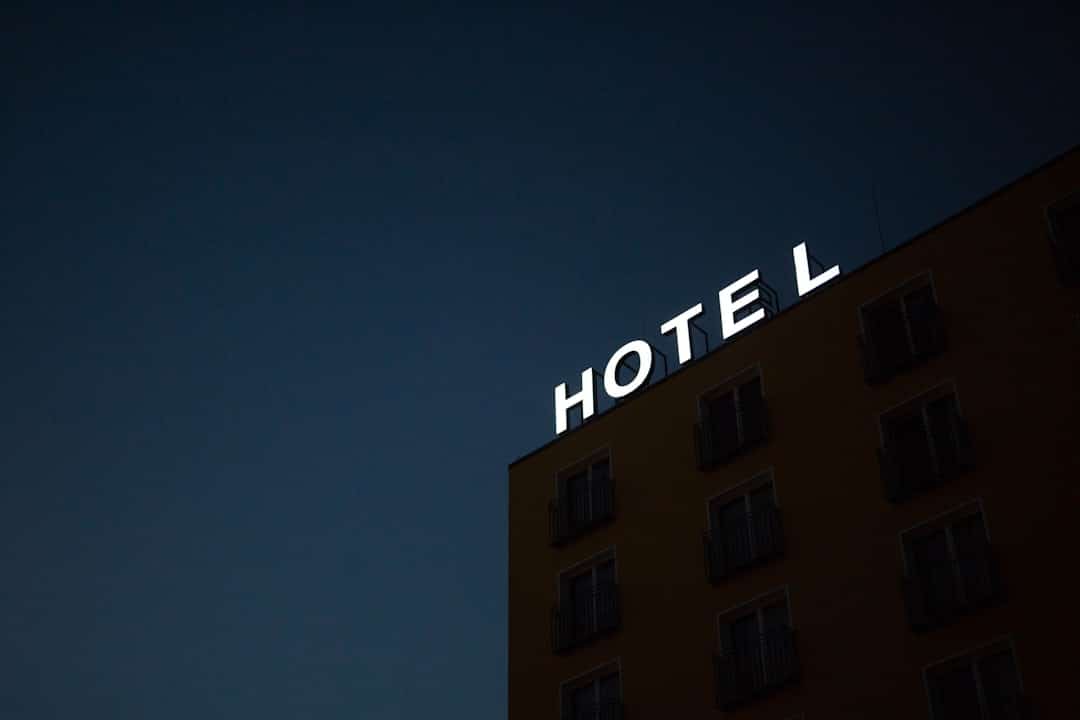Introduction
In a competitive hospitality market, every hotelier wants to know how to increase hotel revenue and drive long-term profitability. From attracting more guests to optimizing room rates, a solid strategy can make the difference between steady growth and stagnation. Yet in pursuing higher returns, many hotels overlook common pitfalls that derail their efforts.
This article highlights five frequent mistakes hoteliers make when trying to improve their bottom line. By recognizing and avoiding these errors, you’ll be better equipped to streamline operations and boost income, whether you’re managing a boutique hotel or part of a large chain.
Table of Contents

Overview of Hotel Revenue
Hotel revenue typically comes from multiple channels: room bookings, on-site dining, event hosting, spa services, and more. While room sales often generate the highest proportion of income, leveraging other services and upselling opportunities is key to maximizing overall earnings.
Why is this important?
The hospitality industry is highly competitive, with travelers able to compare prices, read guest reviews, and book instantly from countless online platforms. Capitalizing on every facet of your hotel’s business—and avoiding strategic missteps—can help you stand out and sustain profitability in this challenging market.
Importance of Avoiding Mistakes
Even small missteps in pricing, marketing, or guest engagement can significantly reduce revenue. For instance, failing to adopt dynamic hotel pricing strategies can result in undercharging and lower average daily rates (ADR). Similarly, ignoring feedback or missing out on emerging digital marketing channels can create dissatisfaction among your guests and weaken future bookings.
In the sections below, we’ll examine the most common mistakes hoteliers make in their quest to learn how to increase room revenue in a hotel and provide actionable solutions for course correction.
Common Mistakes in Hotel Revenue Management

1. Ignoring Hotel Loyalty Programs
Benefits of Loyalty Programs
Overlooking hotel loyalty programs is one of the biggest missteps hotels can make. Loyalty programs encourage repeat business by rewarding guests with perks like room upgrades, late checkouts, and exclusive discounts. Regular guests not only generate a reliable revenue stream but also act as brand ambassadors, recommending your property to friends and colleagues.
Examples of Successful Programs
- Marriott Bonvoy: Offers tier-based membership with points redeemable for free nights and other travel experiences.
- Hilton Honors: Allows members to pool points with friends and family and enjoy app-based check-in features.
When well-executed, these programs can greatly boost occupancy rates and foster long-term customer relationships.
2. Underutilizing Hotel Revenue Management Software
Key Features of Revenue Management Software
Many hoteliers do not take full advantage of hotel revenue management software. Effective software helps you monitor competitor pricing, forecast demand, and automate rate adjustments based on real-time data. This technology often includes features like:
- Dynamic pricing tools
- Historical and predictive analytics
- Integration with property management systems (PMS)
- Automated yield management
How Software Can Drive Revenue
By deploying the right revenue management software, you can make data-driven pricing decisions that optimize your ADR and occupancy rates. This allows you to remain competitive in fluctuating markets, identify high-demand dates for premium pricing, and quickly respond to industry trends.
3. Neglecting Social Media Marketing for Hotels
Importance of Social Media Presence
Hoteliers sometimes underestimate the power of social media marketing for hotels. Platforms like Facebook, Instagram, and TikTok offer enormous visibility. They enable direct communication with both existing and potential guests, letting you showcase facilities, share guest experiences, and announce special offers.
Effective Strategies for Engagement
- Regular Posting: Consistently share news, promotions, and guest stories.
- Visual Appeal: High-quality photos and videos of rooms, amenities, and local attractions capture travelers’ attention.
- Influencer Collaborations: Partner with travel bloggers or social media influencers to reach wider audiences.
- User-Generated Content: Encourage guests to share experiences online by offering incentives or running contests.
A dynamic social media presence not only generates bookings but also strengthens your hotel’s online reputation.
4. Mismanaging Hotel Pricing Strategies
Understanding Dynamic Pricing
Ineffective or outdated hotel pricing strategies can severely limit revenue. Dynamic pricing involves adjusting room rates based on real-time demand, seasonal trends, and competitor behavior. By continually analyzing market conditions, hotels can maximize occupancy during slower periods and capitalize on higher demand during peak seasons.
Consequences of Poor Pricing Decisions
- Overpricing: Drives potential customers to competitors.
- Underpricing: Leaves revenue on the table, lowering your ADR.
- Stagnant Rates: Relying on a single or flat-rate system ignores market fluctuations and reduces profitability.
Staying nimble with your pricing ensures you remain attractive to prospective guests while maintaining a healthy profit margin.
5. Failing to Analyze Data and Feedback
Importance of Guest Feedback
Guest feedback—from online reviews to post-stay surveys—provides direct insight into what’s working and what needs improvement. Ignoring this feedback means missing opportunities to address problems proactively and losing the trust of potential new guests who rely on reviews.
- Review Management Platforms (e.g., Revinate, TrustYou)
- Survey Tools (e.g., SurveyMonkey, Typeform)
- Social Listening Tools (e.g., Hootsuite)
- Property Management Systems (PMS) with built-in reporting
Using these tools helps you refine your operations, enhance customer satisfaction, and ultimately boost revenue.
Strategies to Correct Mistakes

1. Enhance Loyalty Program Offerings
- Tiered Rewards: Offer ascending benefits to encourage frequent stays.
- Personalized Perks: Use guest data to tailor amenities and experiences.
- Regular Communication: Keep members engaged with email updates on promotions or new features.
2. Invest in Comprehensive Revenue Management Software
- Compare Vendors: Look for solutions with forecasting, dynamic pricing, and reporting features.
- Integration: Ensure the software easily integrates with your PMS, channel manager, and marketing tools.
- Training: Provide staff with proper training to maximize the software’s capabilities.
3. Leverage Social Media for Promotions
- Targeted Ads: Use demographic and location-based targeting for campaigns.
- Regular Updates: Share behind-the-scenes content, guest testimonials, and seasonal deals.
- Cross-Promotions: Collaborate with local businesses or tourism boards to expand reach.
4. Optimize Pricing Strategies
- Segmented Pricing: Offer different packages for business travelers, vacationers, and event attendees.
- Seasonal Adjustments: Increase or decrease rates based on holidays, local events, and weather patterns.
- Mobile Bookings: Offer exclusive mobile-only rates or promotions to capture on-the-go reservations.
5. Create a Feedback Loop for Continuous Improvement
- Systematic Collection: Automate post-stay surveys and online review requests.
- Timely Responses: Address complaints quickly and thank guests for positive feedback.
- Iterative Changes: Use insights to update amenities, pricing, and marketing tactics regularly.
Frequently Asked Questions
Why should I invest in hotel revenue management software?
Investing in revenue management software helps you make data-driven pricing decisions, forecast demand accurately, and maximize occupancy. It integrates with your property management system, automates yield management, and compares competitor rates—ultimately ensuring you set optimal prices based on real-time market conditions.
How do loyalty programs increase hotel revenue?
Hotel loyalty programs incentivize repeat bookings through exclusive perks such as room upgrades, late checkouts, or free nights. These programs encourage guests to choose your property over competitors for future stays, enhancing customer lifetime value and creating a reliable revenue stream.
What are some effective social media marketing strategies for hotels?
Regularly posting visually appealing content, collaborating with influencers, and using targeted ads can help you reach a wider audience. Additionally, engaging with user-generated content, such as guest photos or testimonials, further promotes authenticity and drives interest in your property.
When is the best time to adjust my hotel’s pricing strategies?
Optimal pricing strategies are dynamic and should be adjusted whenever market conditions change—such as during peak travel seasons, local events, or unexpected dips in demand. Monitoring real-time data through revenue management software allows you to quickly respond to these fluctuations and maximize revenue.
How can I gather and analyze guest feedback effectively?
Use automated post-stay surveys, online review platforms, and social listening tools to collect feedback. Organize this data within a centralized system, like your PMS or a dedicated review management platform, to identify trends. Then, implement necessary changes to continuously improve the guest experience and boost overall revenue.
Conclusion
In the quest to learn how to increase hotel revenue, you must first address common pitfalls: neglecting loyalty programs, underutilizing hotel revenue management software, ignoring the power of social media marketing for hotels, mismanaging hotel pricing strategies, and overlooking the importance of data and guest feedback.
These five mistakes can have a significant impact on your bottom line. By correcting them through well-designed loyalty programs, robust software solutions, strategic social media engagement, dynamic pricing, and continuous feedback loops, you’ll be better positioned to elevate both your occupancy rates and overall revenue.
Take a close look at your current operations. Is there room for improvement in one or more of these areas? By making thoughtful, data-driven changes, you’ll set your property on a clear path toward higher profitability and a stronger market presence in the United States—and beyond.

